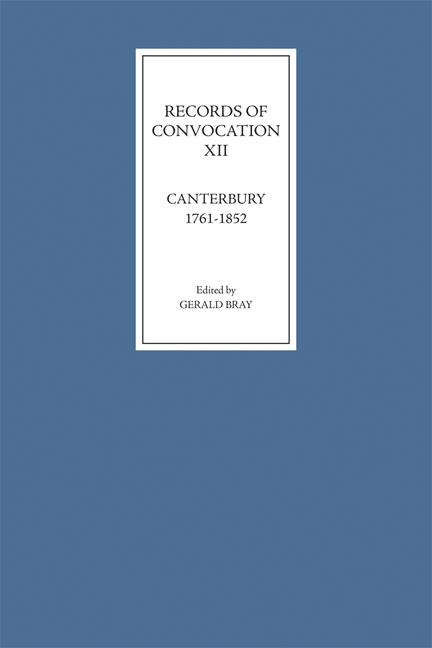Membership of convocation
Published online by Cambridge University Press: 10 January 2024
Summary
Despite the large amount of material available, it is very difficult to determine precisely how large the convocation of Canterbury was at any given point in its history before 1852. We know that from the beginning, it had an upper house which consisted of the bishops and the abbots or priors of a number of monastic houses, and a lower house comprising the deans of each cathedral church and the archdeacons of every diocese, together with a proctor for the cathedral chapter and one or two proctors for the diocesan clergy.
An attempt was made to define this more precisely in 1453, when a list of the eligible abbots and priors was compiled. Unfortunately it does not include every diocese, and we cannot be sure that it is complete. It is also not clear whether the diocesan clergy were supposed to be represented by one or two proctors, or whether (as seems possible) the number varied from one diocese to another.
In 1563 Archbishop Matthew Parker tried to define membership in both the northern and the southern convocations. By then the monasteries had been dissolved, but there were a number of peculiar foundations which continued to claim representation. Parker established that each diocese should send two proctors for the clergy and one for the cathedral chapter, in addition to the bishops, deans and archdeacons. This seems to have worked well for a time, but by 1600 there was no longer a dean at Llandaff or St David's, and three archdeaconries in north Wales (Bangor, Anglesey and St Asaph) had been annexed to the bishoprics of Bangor and St Asaph respectively. It was later established that when a bishop held a deanery or archdeaconry in commendam he could appoint a proxy to sit in the lower house, but this never seems to have been the case with the Welsh dioceses and was not uniformly true elsewhere either.
The peculiars which Parker recognized were Westminster Abbey, Windsor and Eton. The first of these was entitled to send the dean, a proctor for the chapter and the archdeacon. The second sent the dean and the last the provost, if he was in holy orders.
- Type
- Chapter
- Information
- Records of Convocation , pp. 311 - 312Publisher: Boydell & BrewerFirst published in: 2024

